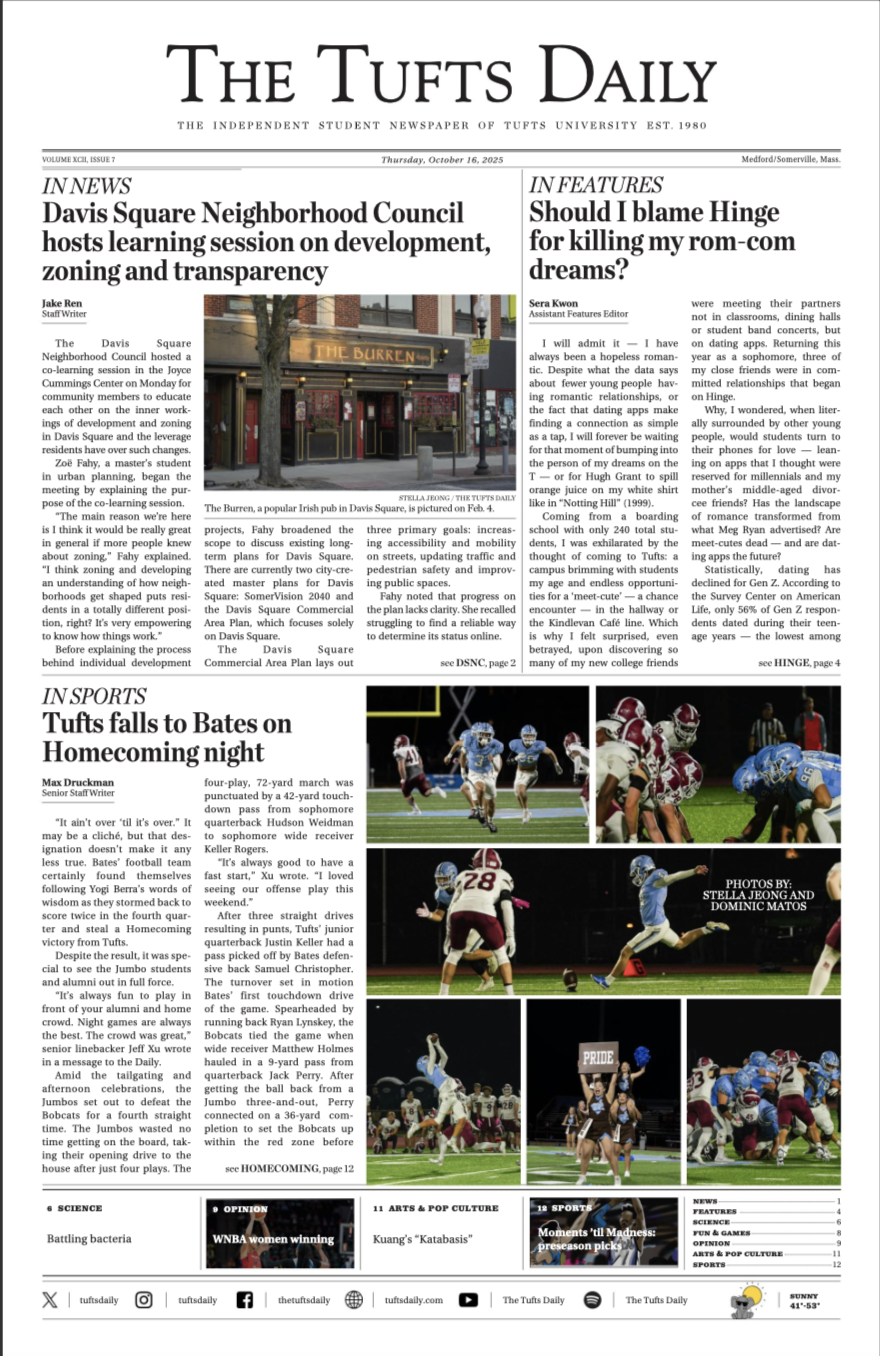No one knows what was actually said between the two men, but an encounter between Richard Nixon and Henry Kissinger on the eve of Nixon's resignation led playwright Russell Lees to speculate about what might have happened on that historic night.
In Lees' play Nixon's Nixon, now playing at The Huntington Theatre Company, he constructs a hypothetical relationship between two unique political figures that manages, on the whole, to captivate its audience.
At first, Nixon, played by Keith Jochim, is seen lamenting in the Lincoln Sitting Room, where the entirety of the play takes place, save for the grand finale. Kissinger, portrayed by Tim Donoghue, enters the room timidly. The Secretary of State, aware of the President's pending impeachment, is wondering why the President has summoned him the night before his scheduled resignation. It quickly becomes apparent that Nixon simply wants Kissinger to hear his last testimony before he succumbs to the inevitable.
Former President Nixon's career engenders intrigue in the minds of the American people to this day. His personal characteristics, a dogged appearance and cynical persona placed him in direct contrast to the normal image of a national leader, as was evidenced by his defeat to the more attractive and more enthusiastic Kennedy in the 1960 election. Yet, he still managed to win the votes of Americans time and again, which helps to explain the fascination with this powerful man.
Unfortunately, the exploration of Nixon's "character," composing the first third of the play, fails to produce the same support from the audience. A pattern develops where Nixon rants while Kissinger tries to subtly coerce him into resignation. This portion of the script lags because it all stays at one level; one gets the sense that this part of the play would be more interesting to read than see performed.
To his credit, Lees' show recovers from its initial dramatic deficiency in time to incorporate other layers and to achieve, in the end, the necessary arc - the rise and fall of action and tension - that completes a production. The author employs a clever device that of which the technical staff made strong use, where the two actors act out a flashback without actually breaking from their characters. This decision, whether it was made by the playwright or the director, succeeded in both broadening the depth of the play and infusing comedy.
From this point on, all aspects of the play picked up. Up until this point, the movement of the actors had been commendable but not exceptionally noteworthy. Director Charles Towers found exciting ways to position the actors within the minimal set that matched the excitement of scenes where Kissinger became Mao Zedong for the reenactment of Nixon's historical meeting with the Chairman, for example.
In these scenes where the characters performed flashbacks, the actors shined the brightest. Donoghue skillfully portrays Kissinger, maintaining the German accent even in the scenes where he becomes someone else. He has a good comic sense, although there are times when he forces the issue. Overall, he successfully captures the verbal and physical aspects of the playwright's zanier version of the former Secretary of State without once sacrificing his character's intentions.
Playing the title role, Jochim also finds the physicality and the vocal quality of his character. Even though he does not necessarily resemble the former President, one almost forgets that Nixon is dead whenever Jochim does the trademark jowl shake. He discovers all the layers of the complicated man, from his hunger for power to his strong self-hatred. A character with such inner contradictions provides a great deal of levels for an actor to capitalize on, and Jochim does just that.
It is likely that the performance of the actors is heavily influenced by the direction of Towers, who has remounted this production at several international venues before coming to Boston. His interpretation of Nixon brilliantly captures the famous figure in a sympathetic, almost gruesome, and undeniably humorous fashion. As for Kissinger, he makes sure to emphasize the self-serving aspect of the man without denying his soft spot for his commander-in-chief.
Lighting designer Dan Kotlowitz and sound designer Ben Emerson manipulate their respective tools to create wonderful scene changes that aid the overall production. In addition, while the set itself never changes, drastic changes in sound and light actually shift the scene when the characters do scenes from the past. The audience sees the set stand still, but they are still somewhat transcended to another place. These transitions cleverly parallel the structure of the flashback scenes when the characters enter different realities, but never really fall "out of character."
Costume designer Hillary Derby also deserves commendation for her fitting choices of costumes. The ever-proper and somewhat rigid Kissinger wears a tuxedo with a bowtie and Nixon is formally dressed, trying to retain the air of a President despite his impending resignation. Scenery designer Bill Clarke chooses appropriate furniture and scene design to denote the White House.
The production comes full circle and redeems itself by the end, culminating in one super conclusion, magnificently sculpted by the entire crew, that erases the memory of the play's duller moments. Despite weaknesses early on in the play, Nixon's Nixon soon erases from the memory of its audience these flaws and proves to be an all-around dramatic success.
'Nixon's Nixon' plays at the Huntington Theatre through April 7. Tickets are available by calling 617-266-0800 or at the Huntington Theatre box office





